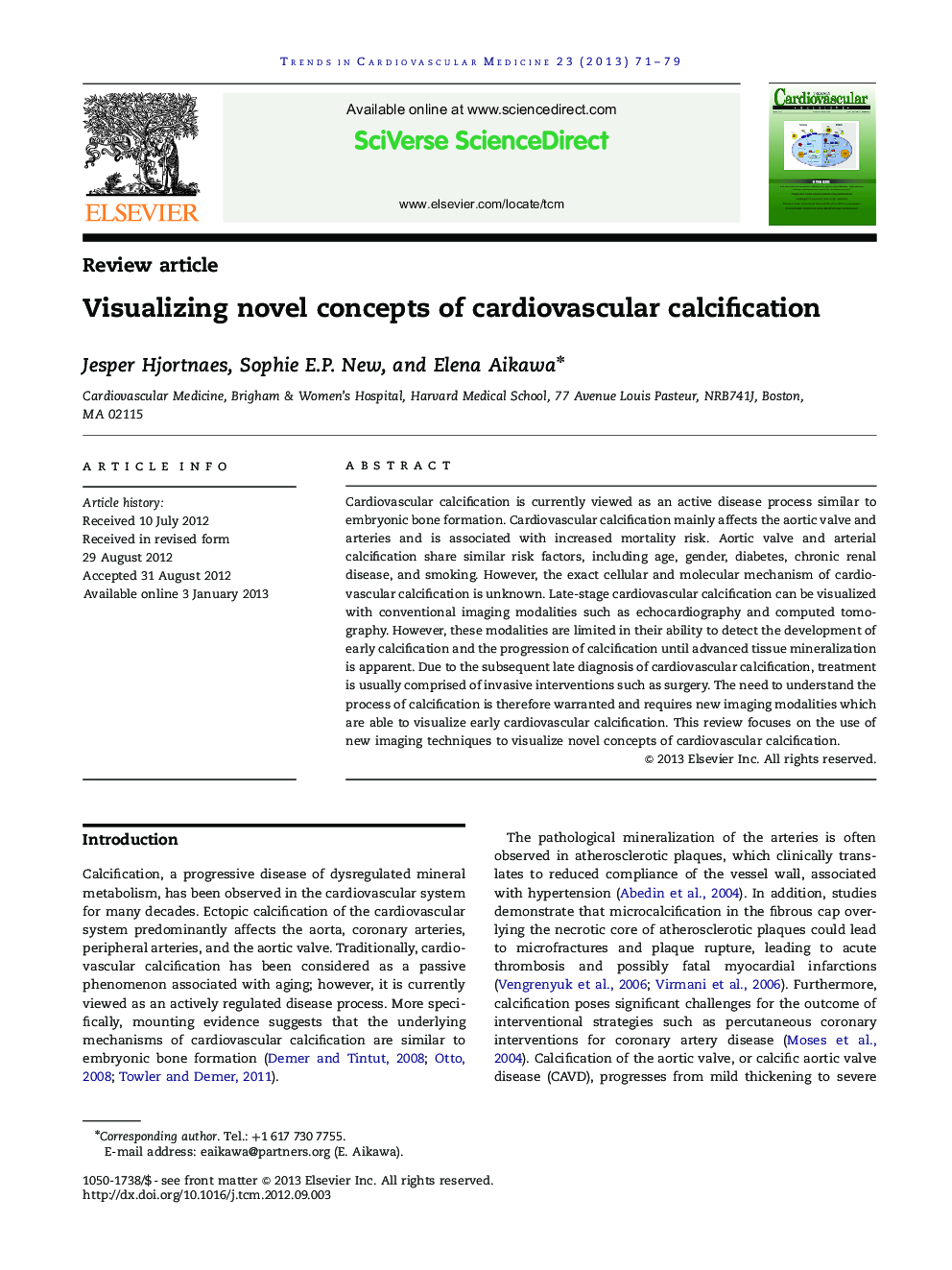| Article ID | Journal | Published Year | Pages | File Type |
|---|---|---|---|---|
| 3030976 | Trends in Cardiovascular Medicine | 2013 | 9 Pages |
Cardiovascular calcification is currently viewed as an active disease process similar to embryonic bone formation. Cardiovascular calcification mainly affects the aortic valve and arteries and is associated with increased mortality risk. Aortic valve and arterial calcification share similar risk factors, including age, gender, diabetes, chronic renal disease, and smoking. However, the exact cellular and molecular mechanism of cardiovascular calcification is unknown. Late-stage cardiovascular calcification can be visualized with conventional imaging modalities such as echocardiography and computed tomography. However, these modalities are limited in their ability to detect the development of early calcification and the progression of calcification until advanced tissue mineralization is apparent. Due to the subsequent late diagnosis of cardiovascular calcification, treatment is usually comprised of invasive interventions such as surgery. The need to understand the process of calcification is therefore warranted and requires new imaging modalities which are able to visualize early cardiovascular calcification. This review focuses on the use of new imaging techniques to visualize novel concepts of cardiovascular calcification.
